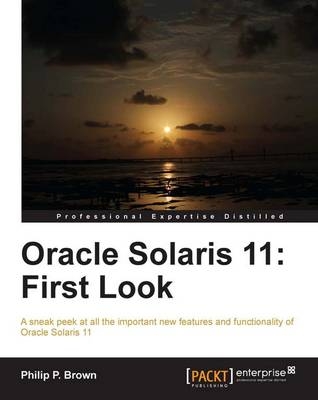
Oracle Solaris 11: First Look
Packt Publishing Limited (Verlag)
978-1-84968-830-7 (ISBN)
- Titel nicht im Sortiment
- Artikel merken
Phil was introduced to computers at the early age of 10, by a science teacher at St. Edmund's College, Ware, UK. He was awestruck by the phenomenal power of the ZX81's 3 MHz Z80 and 1K of RAM, showcasing the glory of 64 x 48 monochrome block graphics! The impressionable lad promptly went out and spent his life savings to acquire one of his very own, and then spent many hours keying in small BASIC programs, such as “Ark Royal”, a game where you land a block pretending to be an aircraft, on a bunch of lower blocks pretending to be an aircraft carrier. Heady stuff! When birthday money allowed expanding the ZX81 to an unbelievable 16k of RAM, he felt the need to also acquire a patch cable to allow him to actually “save” programs to audiocassettes. Once this was deployed to the family cassette recorder, he was not seen again for some months to come. Phil's first exposure to Sun Microsystems was at U.C. Berkeley in 1989, as part of standard Computer Science classwork. Students were expected to do their classwork on diskless Sun 3/50 workstations, running SunOS 4.1.1. During this time, he wrote his first serious freeware program, kdrill, which at one time was part of the official X11 distribution, and remains in some Linux distros to this day. He eventually acquired a Sun workstation for personal use (with disk and 1/4” tape drive), and continued his home explorations, eventually transitioning from SunOS to Solaris, around Solaris 2.5.1. The principles of the original, pre-GPL freeware licenses prevalent in 1989 inspired Phil the most. Led by their example, he has contributed to an assortment of free software projects along the way. A little-known fact is that he is responsible for “MesaGL” morphing into the modern “GLX/OpenGL” implementation it is known for today. At the time, Mesa was primarily an OpenGL copy, with a separate, non-X11 API, since the author Brian Paul did not believe that it could function in a speed-effective way. In 2003, Phil wrote the first GLX integration proof of concept code, which convinced Brian to eventually commit to true GLX extension support. In 2002, Phil created “pkg-get”, inspired by Debian's “apt-get” utility, and started off CSW packaging. This brought the era of network installed packages to Solaris at last. All major pre-Solaris-11 public Solaris package repositories still use pkg-get format catalogs for their software. On the “Real World” level, Phil has also had an impact on the existence of Solaris itself. In 2002, Sun Microsystems was on the road to canceling Solaris x86 as a product line. The community was outraged, and a vote in the old “solarisonintel” Yahoo group resulted in six community representatives to make the case for x86 to Sun. Phil was one of these six who were eventually flow to Sun HQ to meet the head honchos, and banish the forces of evil for a time. Phil's current hobbies include: writing (both articles, and code), riding motorcycles, historical fiction, and keeping his children amused. The Solaris-specific part of his website is http://www.bolthole.com/solaris
| Erscheint lt. Verlag | 2.4.2023 |
|---|---|
| Verlagsort | Birmingham |
| Sprache | englisch |
| Themenwelt | Informatik ► Betriebssysteme / Server ► Unix / Linux |
| ISBN-10 | 1-84968-830-3 / 1849688303 |
| ISBN-13 | 978-1-84968-830-7 / 9781849688307 |
| Zustand | Neuware |
| Haben Sie eine Frage zum Produkt? |